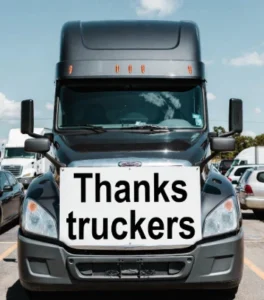With over half of U.S. traffic fatalities occurring on urban and suburban roads—and nearly two-thirds of those victims being pedestrians—the federal government is targeting the heart of the roadway safety crisis with a new nationwide initiative.
U.S. Transportation Secretary Sean P. Duffy has issued a clear warning to every governor across the country: roads are for safety, not politics. In his message, Duffy emphasized that highways, intersections, and roadways must prioritize the protection of lives—not serve as platforms for political statements, murals, or artistic distractions.
That message marked the official launch of SAFE ROADS (Safe Arterials for Everyone through Reliable Operations and Distraction-Reducing Strategies), a bold national program aimed at reducing deaths on the most dangerous non-express roadways in the country.
“Roads are for safety—not for political messages or public art. Too many Americans are dying in crashes for us to lose focus,” said Secretary Duffy.

What Is the Goal of Safe Roads?
Safe Roads has a sharp focus: improving safety on non-express arterials—that is, major city and suburban streets that are not highways or freeways. According to the National Highway Traffic Safety Administration (NHTSA), more than 50% of U.S. roadway deaths occur on these roads. Even more troubling: nearly two-thirds of those fatalities are pedestrians.
Key Objectives of the Safe Roads Plan
🔍 Back to basics: Use data to identify critical danger zones and act decisively.
🏙️ Empower states and cities to streamline and upgrade street infrastructure.
🚦 Reduce visual clutter at intersections, crosswalks, and busy corridors.
🚶 Improve pedestrian and vehicle safety, including for automated vehicles.
What States Must Do
Governors now have 60 days to act. Each must:
Identify urban and suburban arterial segments with serious safety or operational issues.
Submit a comprehensive list of these road segments to the Federal Highway Administration (FHWA).
Use crash data, traffic analytics, and collaborate with metropolitan planning agencies to support their decisions.
The FHWA will assist with safety audits, provide technical guidance, and ensure states comply with federal roadway standards, including proper lane use, signage, and intersection visibility.
Removing Visual Distractions: A Controversial Demand
One of the most debated elements of the initiative is Duffy’s call to eliminate political and artistic displays from public roads. The Secretary demanded the removal of signs, painted slogans, or visual installations on pavements, intersections, and sidewalks that may distract drivers or pedestrians.
“Crosswalks and intersections must be free from any kind of distraction,” Duffy stated firmly.
Background: A Pattern of Action
This is not the first time Duffy has addressed unsafe urban roadways. On March 6, he sent a similar directive to Washington, D.C., calling for urgent safety improvements following a series of crashes in school zones, public transit stations, and major downtown intersections.
The Numbers Behind the Crisis
📊 50%+ of U.S. road fatalities happen on urban/suburban arterials
🚶♀️ 65%+ of those deaths are pedestrians
⚠️ Intersections and main roads are the most dangerous points
👁️ Visual distraction is a top risk factor in urban traffic zones

The strangest Black Friday purchases: from funny to nothing
Fueled by the adrenaline of the moment and the excitement of scoring big discounts, many shoppers have ended up buying unusual items during Black Friday.

Young drivers wanted, older drivers needed: the industry’s biggest dilemma
The road transportation industry remains at a crossroads in its efforts to recruit young drivers, but the workforce keeps aging and seeking retirement. The road

Thanksgiving, Black Friday and the Long Weekend: America Moves Because Trucks Never Stop
Thanksgiving, Black Friday and the Long Weekend: America Moves Because Trucks Never Stop

Thankful for the Drivers Who Keep America Moving This Thanksgiving
Thankful for the Drivers Who Keep America Moving: The Invisible Work Behind One of the Busiest Thanksgiving Seasons

Preparing for Thanksgiving travel: best and worst times to travel
Whether you are a truck driver, a traveler, or simply someone who needs to move around during these days, we share essential information to help

Cargo theft spikes during Thanksgiving: how to stay safe
Every year during Thanksgiving, cargo theft poses a serious threat to the trucking industry, and this year will be no exception. Every year during Thanksgiving,
